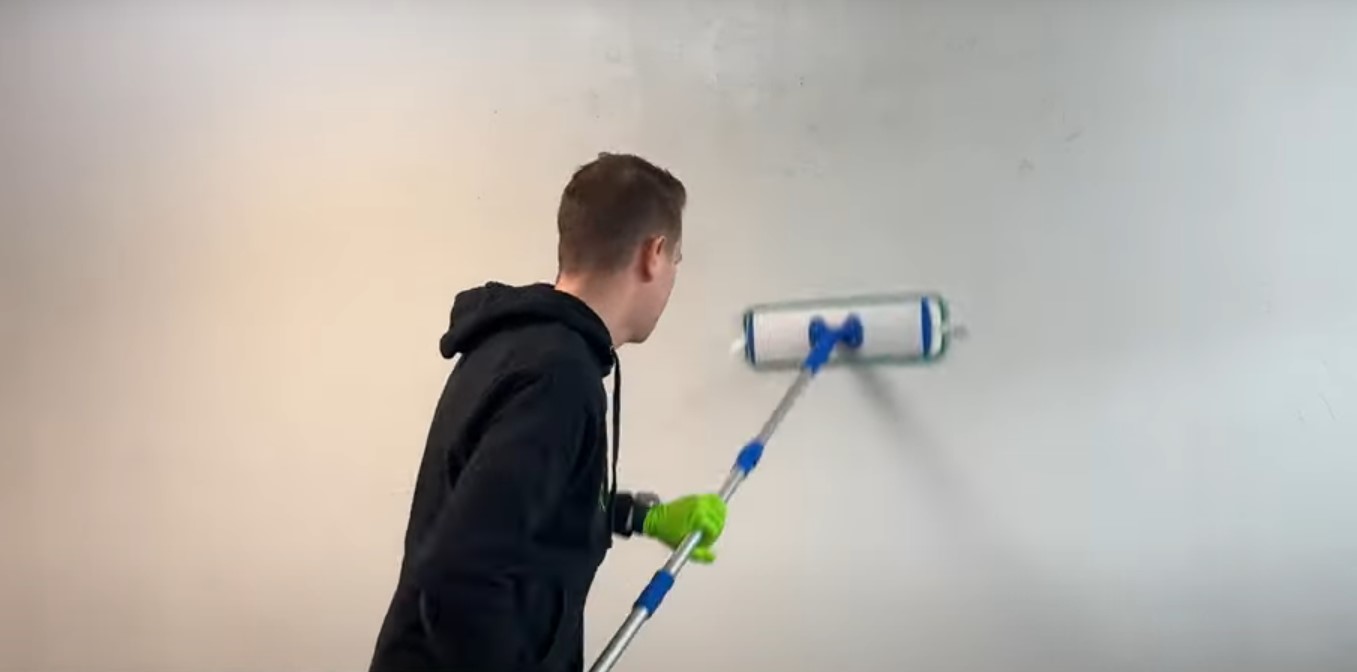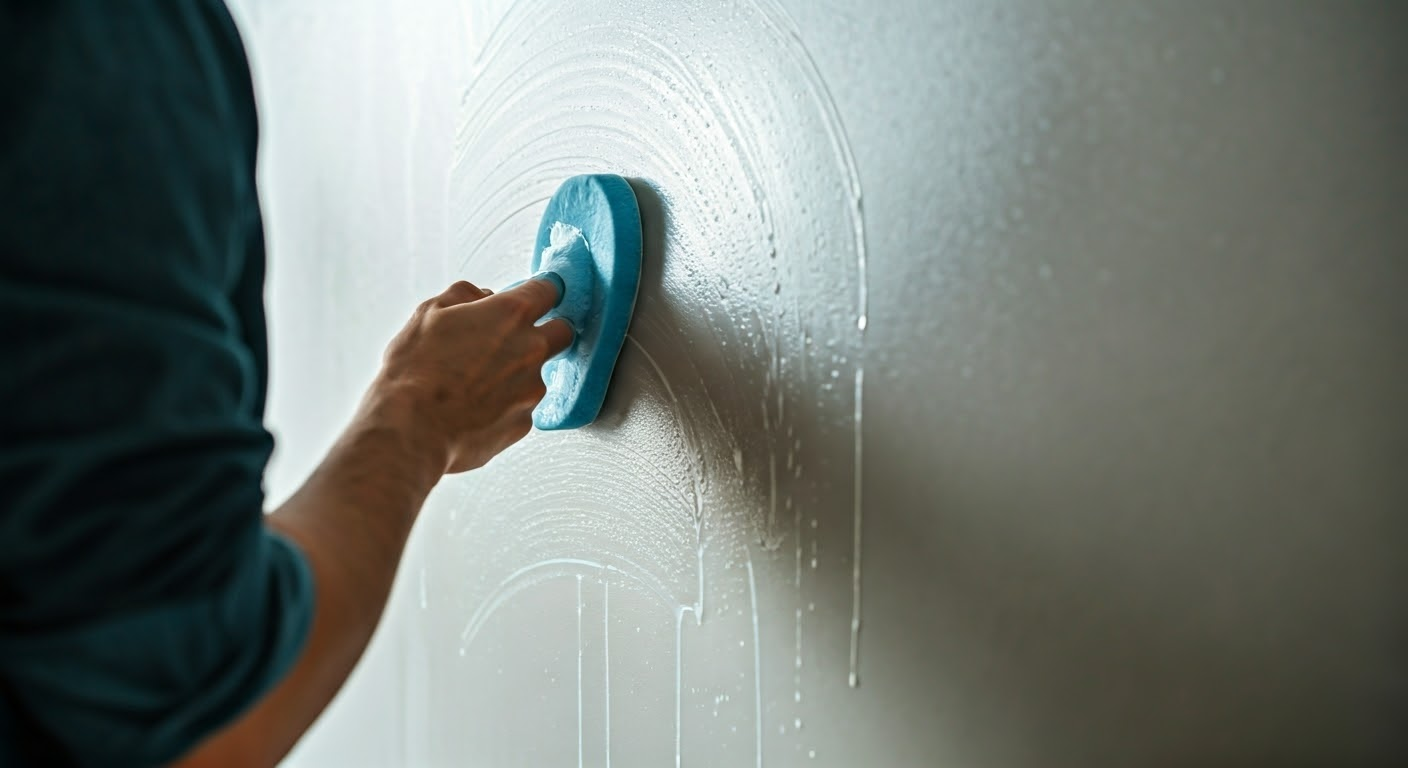When you want to paint walls, cleaning them first is very important. Dust, grease, and mildew can build up over time. These can make it hard for new paint to stick well. Using a cleaning solution, like dish soap mixed with clean water, helps remove this grime.
This way, the paint can adhere properly and create a durable finish. This is true whether you are cleaning kitchen walls, bathrooms, or busy areas. Properly preparing your walls ensures a beautiful paint job that lasts.

Preparing Your Wall Cleaning Toolkit
The first step to washing your walls before you paint is to have the right cleaning tools ready. You will need items like microfiber cloths, mild detergent, clean buckets, and sponge mops. Microfiber cloths clean well without leaving lint. Use mild detergent with clean water to break down grease and dirt easily.
You also need rubber gloves and goggles for safety. It’s a good idea to have two buckets — one for your cleaning solution and one for rinsing. This keeps things clean and avoids mixing. If your walls are high, a ladder will help you reach them better. If you have carpets or wooden floors, use drop cloths. They protect your surfaces from drips and leftover cleaning solution during washing. When you prepare these supplies in advance, it makes the cleaning process easy and effective.
Essential Supplies Needed for Effective Wall Washing
A gallon of warm water is key. It helps improve the strength of any cleaning solution. Adding a mild detergent, like dish soap, gives it an extra boost. This helps the paint stick better for a new paint job. Microfiber cloths and damp sponges are great for getting rid of loose dust and grime. If you face tough spots, a cleaner like trisodium phosphate or white vinegar can really help. Lastly, make sure to have clean towels ready for drying. This stops moisture from building up.
Safety Gear to Protect Yourself During Cleaning
Wearing the right safety gear helps create a safe cleaning space. A strong pair of gloves, like rubber or latex, can protect you from strong chemicals in cleaning solutions. Safety goggles are key to keep your eyes safe from splashes when washing walls. You should also think about using a mask to protect against dust, mold spores, or residue that may come out during cleaning. Wear comfortable, non-slip shoes to stay safe and avoid slipping on wet surfaces. This makes wall washing more effective and secure.
Initial Cleaning Steps Before Washing Walls
Start by taking away cobwebs, dust, and other debris as the first steps in cleaning your walls. You can use a vacuum cleaner with a brush attachment or a microfiber cloth to get rid of loose dirt. This makes your wall surfaces ready for deeper washing. Lay down drop cloths on the floor to keep dirt or water from staining your flooring.
Next, check the wall for mold or tough stains. If you skip this step, it can make cleaning less effective. Mold and grease spots need special attention.

Removing Surface Dust and Debris
A good cleaning of the walls starts by getting rid of dust and debris. These can prevent the paint from sticking well. Using a vacuum cleaner with a brush attachment is a great way to pick up loose dust and cobwebs. This is especially helpful in corners and along edges. For lighter cleaning, you can use a damp sponge or microfiber cloth. Just move it in a circular motion for best results. It’s also important to check light switches and baseboards regularly. This helps make sure no grime is left behind, so the new paint can look perfect.
Identifying Areas with Mold or Heavy Staining
To spot mold or big stains, you need to look closely while preparing. Begin by checking wall surfaces for discolored spots, especially in damp places like kitchens and bathrooms. Mold usually shows up as dark spots. This indicates that you need to act quickly. Use a flashlight to find any flaws in dark corners. For tough stains, a damp microfiber cloth can help you see areas that need more care. Taking care of these problems early will ensure that the new paint sticks well and gives you a smooth finish.
Techniques for Washing Walls Effectively
For good wall washing, use gentle but effective methods. Soap and warm water work well for regular cleaning. For tough stains, stronger solutions might be needed. Start by cleaning small areas to be thorough. Use a sponge and make rotating motions to prevent streaks.
When you face stubborn stains, homemade remedies like baking soda paste or diluted vinegar can be very effective. Be careful not to use too much water. Excess moisture can slow down drying and affect paint adhesion later.
Using Soap and Water for General Cleaning
Mixing warm water with a mild detergent creates a good cleaning solution for washing walls. For most interior walls, use one gallon of warm water and dish soap for the best results. Take a damp sponge or microfiber cloth and scrub the wall surface gently in a circular motion. Focus on spots with grime or grease, especially on kitchen walls near light switches. Use a clean towel to wipe away any extra moisture. This helps with paint adhesion during priming.
Addressing Stubborn Stains with Specialized Solutions
Stubborn stains can really make walls look bad, especially before you paint them. A good cleaning solution can help a lot. You can use a mild detergent mixed with warm water or white vinegar to remove stains effectively. For tougher scuff marks or grease, try using a degreaser or trisodium phosphate (TSP). Apply these solutions with a damp cloth or sponge in a circular motion. Be careful not to soak the wall too much so you don’t damage the moisture level.
Drying and Inspection Post-Washing
After you clean the walls, it is very important to dry them well. Moisture can cause the paint to bubble, so drying is a key step. You can use fans or open windows to help air flow. Make sure the walls are dry before you paint again.
Also, check the walls closely under bright light. You might find spots or stains that you missed. If you see any, you will need to clean them more to get the walls fully ready for paint.
Best Practices for Drying Walls Efficiently
Letting walls dry properly is key for getting a smooth finish when painting. One good method is to use a fan or dehumidifier. This helps air move around the walls, making moisture evaporate faster. You can also take a clean towel or microfiber cloth to gently blot up excess moisture in small areas, especially near light switches. For the best results, try to keep them out of direct sunlight. This can cause the walls to dry unevenly, which might create imperfections in your new paint.
Inspecting Walls for Missed Spots or Remaining Stains
|
Inspection Zone |
Common Issues |
Recommended Action |
|---|---|---|
|
Center of Walls |
Fingerprints, smudges |
Re-clean with baking soda paste |
|
Corners & Crevices |
Cobwebs, dust |
Vacuum with brush attachment |
|
Moldy Areas |
Stains, mildew |
Use bleach solution |
Bright lights can show imperfections. If spots come back after cleaning, repeat the cleaning methods. This will help avoid any problems when you start priming and painting.
Frequently Asked Questions
What is the safest cleaner to use on painted walls?
The best cleaner for painted walls is a mild detergent like dish soap mixed with warm water. This solution is pH-neutral and safe for interior walls. It won’t harm the finish. Avoid strong chemicals. Use gentle cleaners to keep your walls smooth and undamaged.
How often should walls be cleaned before repainting?
The need for wall washing before repainting depends on how clean your home’s interior walls are. Rooms that get a lot of use or have grease and grime, like kitchens, might need to be cleaned before each repaint. Usually, it is a good idea to clean the walls well before adding a new coat of paint.
What Rooms Typically Need Walls Washed?
Rooms that have grease, moisture, or dirt, like kitchens and bathrooms, need washing before painting. Places where many people walk, like hallways, also need this. Clean areas that get a lot of dust, like mudrooms or entryways, can help the new paint stick better by cleaning them too.
How do I tackle stubborn stains or dirt on my walls before painting?
For tough stains, it’s best to treat them first with a cleaning solution like a baking soda paste or dish soap. If that doesn’t work, light sanding can help get rid of hard spots. There are special solutions or degreasers for grease or mildew. These will make sure the wall surface is ready for paint and gives you great results.
Conclusion
Washing your walls before painting is very important. It helps create a good start for a smooth project. By using the right tools and methods, you can make sure your walls are clean and ready for new paint.
Don’t forget to focus on details, like taking away dust and removing stains. These things can really change the final look. Cleaning your walls well will help your paint job last longer and make your space look nice. If you have more questions or want to learn more about preparing your walls, check out our FAQ section. Happy painting!
